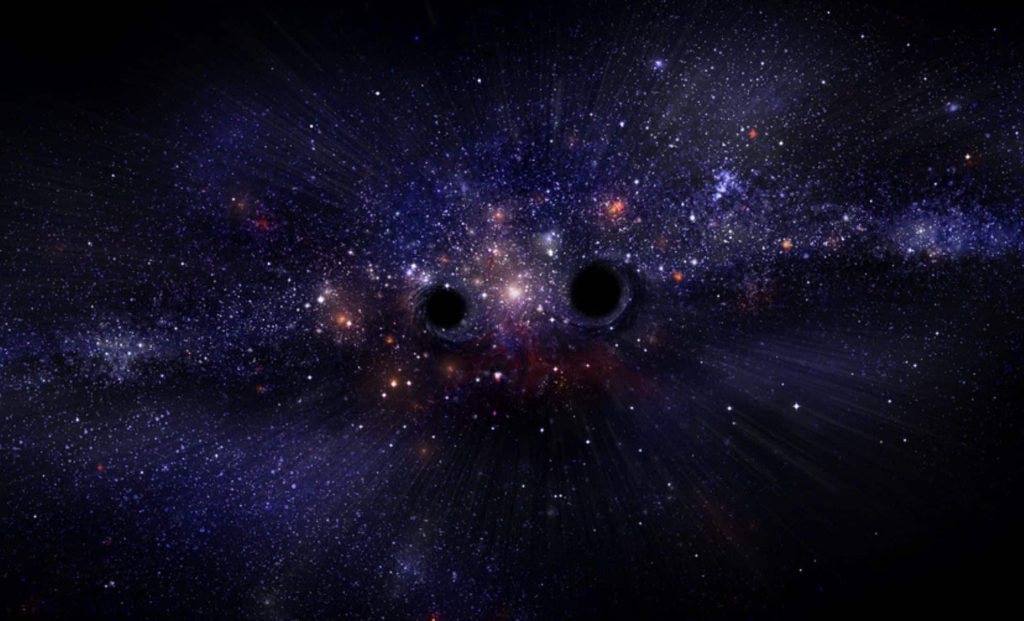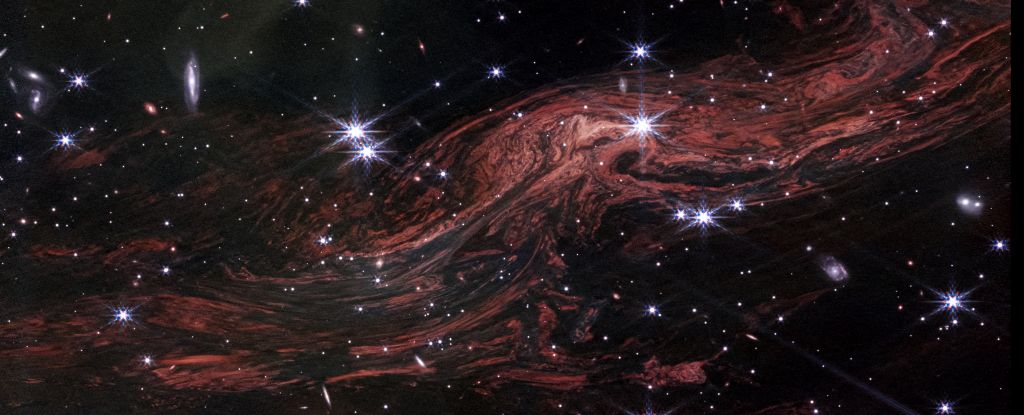Dark Stars Discovered: The Cosmic Mystery That Could Rewrite Astronomy – The Daily Galaxy –Great Discoveries Channel

For the first time in history, scientists using the James Webb Space Telescope (JWST) may have uncovered evidence of dark stars, colossal celestial objects powered not by nuclear fusion but by the enigmatic annihilation of dark matter. If confirmed, these mysterious entities could rewrite our understanding of the early universe and the nature of dark matter.In an extraordinary breakthrough, scientists may have discovered evidence of dark stars, theoretical celestial objects unlike anything previously observed. These mysterious entities, identified through observations by the James Webb Space Telescope (JWST), could fundamentally alter our understanding of the universe’s infancy and the nature of dark matter, one of science’s greatest mysteries.Unlike traditional stars that rely on nuclear fusion to generate energy, dark stars are thought to be powered by the annihilation of dark matter particles. If confirmed, this discovery would not only introduce a new category of stars but also provide direct insights into the elusive properties of dark matter, which makes up 85% of the universe’s matter yet remains largely undetectable.Dark stars are a theoretical type of stellar object hypothesized to have formed in the early universe, shortly after the Big Bang. Unlike regular stars, which ignite through the fusion of hydrogen into helium, dark stars are believed to be powered by the annihilation of dark matter particles within their cores. This annihilation process generates immense amounts of energy, heating the surrounding hydrogen and helium and causing the star to glow brightly.What makes dark stars so unique is their scale and behavior. These objects are thought to grow to immense sizes, with some models suggesting they could reach up to a million times the mass of the Sun. Their luminosity, combined with relatively low surface temperatures compared to traditional stars, makes them exceptionally distinct. Furthermore, they likely formed in regions of high dark matter concentration, known as dark matter minihaloes, which provided the necessary fuel for their growth.Dr. Katherine Freese, director of the Weinberg Institute for Theoretical Physics at The University of Texas at Austin, and her collaborators, have made significant progress in identifying possible dark star candidates. Freese highlighted the groundbreaking implications of this discovery, stating, “Discovering a new type of star is pretty interesting all by itself, but discovering it’s dark matter that’s powering this—that would be huge.” This potential connection to dark matter dynamics could redefine our understanding of the forces that shaped the early universe.The discovery of potential dark stars comes from the James Webb Space Telescope, the most advanced observatory ever built for studying the universe’s distant past. Using its powerful infrared imaging capabilities, the JWST identified three celestial objects—JADES-GS-z13-0, JADES-GS-z12-0, and JADES-GS-z11-0—that exhibit properties inconsistent with galaxies or clusters of traditional stars.Initially classified as galaxies, these objects appear to be single, supermassive stars rather than groups of smaller stellar bodies. Their light signatures, temperature, and luminosity align more closely with predictions for dark stars, making them strong candidates for this long-sought-after phenomenon.The identification of these potential dark stars represents a monumental achievement, as it opens the door to studying the interactions of dark matter in ways that were previously impossible. The JWST’s ability to observe light from the universe’s earliest epochs provides an unparalleled opportunity to explore how dark stars formed and evolved.Dark matter, which constitutes the majority of the universe’s mass, remains one of the most enigmatic aspects of modern physics. It does not emit, absorb, or reflect light, making it undetectable through traditional observational methods. Its existence is inferred through its gravitational effects on visible matter, such as galaxies and galaxy clusters.The discovery of dark stars offers a groundbreaking opportunity to study dark matter more directly. Since these stars are theorized to be powered by dark matter annihilation, observing them could provide critical insights into the fundamental properties of dark matter particles. This includes their mass, interaction rates, and how they influence the formation of cosmic structures.Moreover, dark stars could help answer key questions about the early universe, particularly the role dark matter played in shaping the first galaxies. By understanding how these stars form and evolve, scientists may uncover new information about the distribution and behavior of dark matter in the universe’s infancy.The potential discovery of dark stars has profound implications for our understanding of the universe. For one, it challenges existing theories about stellar formation and the evolution of cosmic structures. Current models struggle to explain how supermassive black holes, which have been observed in the early universe, could form so soon after the Big Bang.Dark stars provide a possible explanation for this mystery. If these massive objects collapsed into black holes at the end of their life cycles, they could account for the formation of supermassive black holes in the early universe. This connection between dark stars and black holes offers a tantalizing avenue for future research, as it bridges gaps in our understanding of cosmic evolution.Furthermore, the existence of dark stars would validate the concept of dark matter as not just an invisible gravitational force but as a dynamic component of the universe capable of fueling stellar objects. This revelation would revolutionize physics, opening new avenues for studying dark matter and its interactions.While the discovery of potential dark star candidates is groundbreaking, confirming their existence will require extensive follow-up research. The primary challenge lies in analyzing their light spectra, as this could reveal unique signatures associated with dark matter annihilation. However, such detailed observations are time-consuming and require significant resources, particularly from high-demand instruments like the JWST.Additionally, theoretical models of dark stars need further refinement to better predict their properties and behaviors. By improving these models, scientists can more accurately identify dark star candidates and distinguish them from other celestial objects.Collaboration among observatories worldwide will also be crucial. By combining data from the JWST with observations from ground-based telescopes, researchers can build a more comprehensive understanding of these mysterious objects.The discovery of potential dark stars represents a pivotal moment in the quest to understand the universe’s hidden realms. These enigmatic objects, powered by the annihilation of dark matter, could provide answers to some of the most fundamental questions in cosmology.By studying dark stars, scientists hope to uncover new insights into the nature of dark matter, the formation of the first cosmic structures, and the origins of supermassive black holes. As research continues, these celestial phenomena may prove to be the key to unlocking the mysteries of the early universe.For now, the universe keeps its deepest secrets shrouded in mystery, but with each discovery, we take a step closer to understanding the forces that shape our cosmic existence. The search for dark stars is just beginning, and its implications could illuminate a path to new frontiers in science and astronomy.Got a reaction? Share your thoughts in the commentsEnjoyed this article? Subscribe to our free newsletter for engaging stories, exclusive content, and the latest news.Comment Save my name, email, and website in this browser for the next time I comment.
© 2024 | Daily Galaxy | All rights reserved
Source: https://dailygalaxy.com/2025/01/dark-stars-discovered-rewrite-astronomy/






